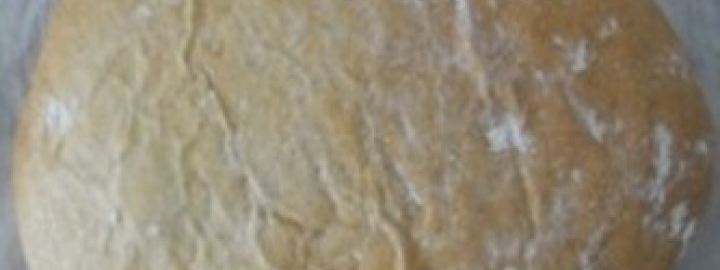Biga acida bread - recipe

-
Prepare
-
Serves
4 -
Cook
-
Skill
Advanced
Ingredients
For the starter
- 300 g Strong white bread flour
- 125 ml Warm water
- 125 ml Grape juice warmed
- 50 g Grapes fresh, seedless, gently rinsed
For the loaf
- 200 g Very strong white bread flour
- 300 g Strong white bread flour
- 90 g Olive oil
- 15 g Unrefined golden caster sugar
- 7 g Sea salt finely crushed
- 270 ml Warm water
- Semolina for dusting
Find similar in:
-
1
In preparation for making your starter, remove all the stalks and any pips from the grapes and liquidise them in a blender.
For this step you'll need:
- 50g Grapes fresh, seedless, gently rinsed
-
2
Warm 50g of the strong white bread flour in an oven on low heat, then mix together with the liquidised grapes in a non-metallic bowl. You may need to add a tablespoon of grape juice to loosen this mixture up, then cover the bowl and leave to stand for 24 hours.
For this step you'll need:
- 50g Strong white bread flour
-
3
The following day, add a further 50g of flour to the starter, along with 25ml of warmed grape juice and 25ml of warm water. Mix together well and then leave to stand. This type of starter should develop more quickly than others as the yeasts and bacteria from the grape skins will become fully active and work very quickly.
For this step you'll need:
- 50g Strong white bread flour
- 25ml Grape juice warmed
- 25ml Warm water
-
4
Repeat this feeding process; 50g flour, 25ml grape juice, 25ml warm water, for the next four days and store your starter in a warm environment in between feeds. The starter should become spongy, with a frothy texture.
-
5
When you are ready to bake a loaf, use the quantity of starter specified then store the remaining starter in the refridgerator for future uses. When you come to use your starter again, bring out of the fridge 24 hours before and feed with flour, grape juice and water.
-
6
To make the bread, dissolve the sugar in 50ml of boiling water then top up with a further 100ml of cold water. Add 300g of the starter into the liquid and whisk well until fully mixed together. Leave to stand in a warm place for 20 minutes to allow the ingredients to activate. This may produce a frothy head, which can be whisked back in to the mix before using.
For this step you'll need:
- 150ml Warm water
-
7
Add 200g of the very strong bread flour in with the liquid mix and blend together to make a thick creamy paste. Stand in a warm place, with a cling-film or tea-towel covering, for 6 hours or overnight, to develop into a spongy mass.
For this step you'll need:
- 200g Very strong white bread flour
-
8
When the mix has become spongy, add the strong white flour, olive oil and salt to the bowl. Whilst mixing, gradually add up to 120ml of warm water until you have a soft dough. If your dough is becoming quite wet, do not add all of the water. Allow the dough to stand for 15 – 20 minutes.
For this step you'll need:
- 300g Strong white bread flour
- 90g Olive oil
- 7g Sea salt finely crushed
-
9
The dough will be quick sticky and will need careful kneading on a board with as little flouring as possible. After 10 minutes of kneading it should start to become quite elastic. Scrape the dough from the board and place into a bowl, cover with a damp tea-towel or cling-film and leave in a warm place to prove for approximately 90 minutes or until doubled in size.
-
10
Preheat the oven to 200°C (180°C fan, gas mark 7) and lightly oil a baking sheet and cover with oiled baking parchment.
-
11
Remove the risen dough from the bowl and gently knead for just 2-3 minutes to get it evenly smooth. Divide into three equal portions.
-
12
Gently flatten each portion into a rough disk about 18-20cm. Take the top edge and fold it onto the middle, then fold in the two outside edges so that they just overlap the folded top edge. Fold over the the bottom edge to meet the very top, giving a shape like a closed envelope.
-
13
Place on the oiled baking parchment, seam side down, on a baking tray. Cover with cling-film or a damp tea towel and put in a warm place to prove for about 30 minutes or until starting to become well risen again.
-
14
Dust the tops of the bread with some semolina flour, then bake in the oven for about 20 minutes, until the tops are a rich, golden brown colour. The loaves should have puffed up and to test that they are baked throughout tap the base and it should sound hollow. Place on a wire rack to cool.
For this step you'll need:
- Semolina for dusting
